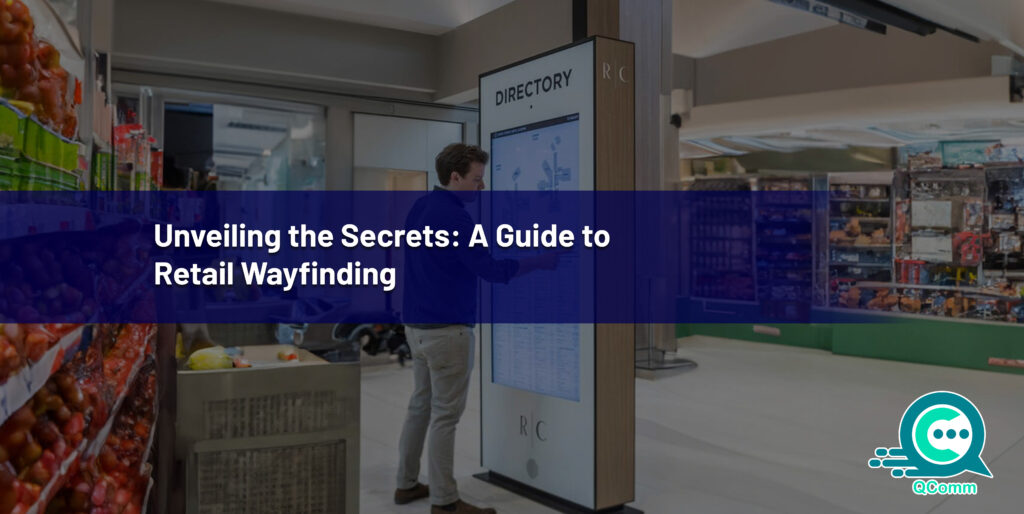
Ever felt lost in a massive shopping mall, desperately searching for a specific store or product? Retail wayfinding comes to the rescue! This innovative technology utilizes digital tools to streamline the shopping experience for both customers and employees within large retail spaces.
What is Retail Wayfinding?
Imagine a virtual map guiding you effortlessly through a labyrinthine mall. That’s the essence of retail wayfinding. It leverages technology like digital maps, interactive signage, and navigation systems to provide accurate directions, audio guides, product location assistance, and an overall more efficient shopping experience. By implementing these tools, retailers can:
- Enhance customer satisfaction: Effortless navigation translates to happier customers, leading to increased sales and brand loyalty.
- Optimize operations: Staff can locate inventory more efficiently, and managers gain valuable customer data to improve store layout and product placement.
5 Unique Techniques to Up Your Retail Wayfinding Game
Shopping malls can leverage a variety of creative wayfinding techniques to optimize their space and enhance the customer journey. Here are five compelling ideas:
- Tech-Savvy Integration: Augmented reality (AR) and virtual reality (VR) can transform the shopping experience. Imagine customers using AR glasses to see a virtual map materialize before their eyes, with strategically placed digital signage seamlessly complementing the experience by displaying dynamic visuals and product details.
- Design with Wayfinding in Mind: Store layout and design play a crucial role in effective wayfinding. Designers should prioritize visibility, legibility, and accessibility when crafting wayfinding maps. Interactive digital directories with real-time information on store locations and promotions empower customers to navigate effortlessly. Interactive floor projections can further enhance the environment with visually striking elements.
- Accessibility for All: Inclusive wayfinding signage caters to individuals with disabilities, ensuring a hassle-free experience for everyone. Audio-based guidance systems, haptic feedback options, and customizable settings like font size and contrast ensure clear information access for all.
- Personalized Shopping Experiences: Retail wayfinding technology can analyze user behavior, purchase history, and contextual data to provide hyper-relevant recommendations. Imagine a customer entering a clothing boutique – a personalized wayfinding app guides them to specific sections aligned with their preferences, creating a more engaging and efficient shopping experience.
- Inventory Management Made Easy: Effective wayfinding is vital for streamlined inventory management. Interactive maps and digital signage empower employees to locate products quickly, minimizing misplacement or loss. Additionally, wayfinding technology provides valuable insights into customer behavior and preferences, allowing retailers to optimize stock placement based on customer traffic patterns.
3 Real-World Examples of Retail Wayfinding in Action
Retail wayfinding isn’t just a concept; it’s revolutionizing the shopping experience! Here are a few inspiring case studies:
- Harrods: London’s Harrods department store implemented a simple hall numbering system and directional totems to improve navigation. The result? Staff reported a significant decrease in customers asking for directions, reduced journey times, and improved overall store flow.
- Macy’s: This renowned department store chain incorporated beacon technology to enhance their wayfinding system. Customers received personalized offers, tailored recommendations, and step-by-step directions based on their location within the store, leading to increased customer engagement and brand loyalty.
- IKEA: IKEA revolutionized its in-store experience with interactive digital wayfinders. Customers could access the system through kiosks, look up desired locations, and receive detailed navigation guides with promotional offers along the way.
Challenges and Benefits of Retail Wayfinding
While retail wayfinding offers a multitude of benefits, there are also challenges to consider:
Challenges:
- Integration: Integrating technology with existing infrastructure requires careful planning, installation, and coordination. Maintenance costs also need to be factored in.
- Technical Limitations: Complex store layouts or areas with poor signal reception can limit accurate tracking and guidance.
- Software Updates: Regular software updates and bug fixes are crucial for accurate mapping, which can be a challenge for mid-sized retailers with limited budgets.
Benefits:
- Enhanced Customer Satisfaction: Effortless navigation translates to happier customers, leading to increased sales and brand loyalty.
- Improved Safety and Security: Clear directions to evacuation exits during emergencies ensure customer and employee safety.
- Data-Driven Optimization: By analyzing customer traffic patterns, wayfinding technology aids in optimizing store layouts, shelf placements, and product selection, maximizing space utilization.
The Road Ahead: A Glimpse into the Future of Retail Wayfinding
The future of retail wayfinding is brimming with exciting possibilities. Cutting-edge technologies like AR are shaping the wayfinding landscape. AR overlays can provide real-time directions and product information, while advanced algorithms enable personalized recommendations and predictive navigation.
